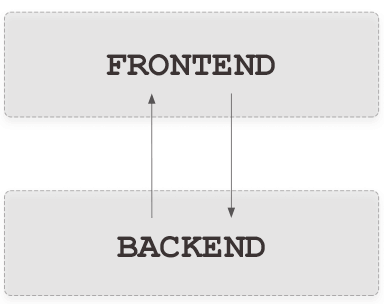All these discussions around headless CMS and traditional CMS might have left you weary and disoriented, which is why our article today will try to take things on a different route by focusing more on helping you thoroughly understand the matter—and avoiding all the unnecessary talks in the process.
Contents
- Understanding the traditional CMS
- The definition
- What traditional CMS means for practical use
- How traditional CMS dictates a system’s capabilities
- The case for headless CMS
- Headless CMS: The definition
- Understanding the APIs in headless architecture
- Knowing when to choose headless CMS
- The pros and cons of headless CMS
- When to choose headless CMS
- Does traditional CMS still have a place?
- Lose your head
Understanding the traditional CMS
The definition
The traditional, coupled CMS is your typical content management platform with everything—the frontend (the presentation layer) and the backend (the content database and the editorial interface)—tightly and directly connected together, allowing for an easier time of managing content.

What traditional CMS means for practical use
Having everything directly linked in a systemic level like this means that you can make changes on your backend and have them reflected on your frontend with minimal configuration. In this way, even the non-technical members of your team will find it an easier time to manage and publish content on your website.
The practicality of traditional CMS is best seen in a blogging platform like WordPress. In WordPress, the process of managing content is made to be user-friendly, with changes to fonts or layouts of a website done via the click of a button on the dashboard. Installing of additional functionalities in WordPress is also a breeze, as you can always download and install plugins directly from the backend.
How traditional CMS dictates a system’s capabilities
In a broader sense, the traditional CMS is conservative and with limited scalability.
Conservative: From the perspective of a developer, it’s hard to innovate in a traditional CMS since the system itself is rigid and monolithic in its nature. And since the frontend and the backend of a traditional CMS are tightly linked together, any new functionality that is implemented onto the frontend also needs dedicated backend support of its own. This is the reason why you should see system-wide maintenance being a regular thing with traditional CMS, as these maintenance are required to roll out new functionalities and ensure stability across the entire system.
Limited scalability: If you add layers and layers of new functionalities on top of your existing ones, chances are you will run into performance issues since not all of these new functionalities are built for your specific system. Coupled with the fact that implementing new functionalities are oftentimes a nerve-wracking process with traditional CMS, scalability remains to be an inherent drawback of traditional CMS that is unlikely to change anytime soon.
#pwa #cms #web-development #programming #developer
